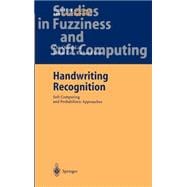
| 1 Introduction | 1 | (16) | |||
|
2 | (4) | |||
|
3 | (2) | |||
|
5 | (1) | |||
|
6 | (11) | |||
|
6 | (3) | |||
|
9 | (2) | |||
|
11 | (1) | |||
|
12 | (5) | |||
| 2 Pre-processing and Feature Extraction | 17 | (44) | |||
|
17 | (13) | |||
|
17 | (4) | |||
|
21 | (9) | |||
|
30 | (1) | |||
|
31 | (26) | |||
|
42 | (7) | |||
|
49 | (8) | |||
|
57 | (1) | |||
|
57 | (4) | |||
| 3 Hidden Markov Model Based Method for Recognizing Hand written Digits | 61 | (28) | |||
|
61 | (15) | |||
|
61 | (2) | |||
|
63 | (2) | |||
|
65 | (8) | |||
|
73 | (3) | |||
|
76 | (10) | |||
|
76 | (6) | |||
|
82 | (4) | |||
|
86 | (1) | |||
|
87 | (2) | |||
| 4 Markov Models with Spectral Features for Handwritten Numeral Recognition | 89 | (18) | |||
|
89 | (2) | |||
|
91 | (4) | |||
|
93 | (2) | |||
|
95 | (8) | |||
|
95 | (3) | |||
|
98 | (2) | |||
|
100 | (3) | |||
|
103 | (1) | |||
|
104 | (3) | |||
| 5 Markov Random Field Model for Recognizing Handwritten Digits | 107 | (24) | |||
|
107 | (7) | |||
|
107 | (2) | |||
|
109 | (3) | |||
|
112 | (2) | |||
|
114 | (8) | |||
|
115 | (1) | |||
|
116 | (1) | |||
|
117 | (1) | |||
|
118 | (4) | |||
|
122 | (6) | |||
|
122 | (2) | |||
|
124 | (1) | |||
|
125 | (3) | |||
|
128 | (1) | |||
|
128 | (3) | |||
| 6 Markov Random Field Models for Recognizing Handwritten Words | 131 | (14) | |||
|
131 | (3) | |||
|
132 | (1) | |||
|
133 | (1) | |||
|
134 | (1) | |||
|
135 | (3) | |||
|
138 | (2) | |||
|
138 | (1) | |||
|
139 | (1) | |||
|
140 | (1) | |||
|
141 | (2) | |||
|
141 | (1) | |||
|
142 | (1) | |||
|
143 | (2) | |||
| 7 A Structural and Relational Approach to Handwritten Word Recognition | 145 | (28) | |||
|
145 | (1) | |||
|
146 | (8) | |||
|
154 | (14) | |||
|
154 | (8) | |||
|
162 | (1) | |||
|
163 | (5) | |||
|
168 | (1) | |||
|
169 | (3) | |||
|
172 | (1) | |||
| 8 Handwritten Word Recognition Using Fuzzy Logic | 173 | (22) | |||
|
173 | (1) | |||
|
173 | (1) | |||
|
174 | (1) | |||
|
174 | (10) | |||
|
176 | (4) | |||
|
180 | (4) | |||
|
184 | (7) | |||
|
186 | (5) | |||
|
191 | (1) | |||
|
192 | (3) | |||
| 9 Conclusion | 195 | (28) | |||
|
195 | (2) | |||
|
197 | (4) | |||
|
201 | (22) | |||
| Index | 223 |
The New copy of this book will include any supplemental materials advertised. Please check the title of the book to determine if it should include any access cards, study guides, lab manuals, CDs, etc.
The Used, Rental and eBook copies of this book are not guaranteed to include any supplemental materials. Typically, only the book itself is included. This is true even if the title states it includes any access cards, study guides, lab manuals, CDs, etc.